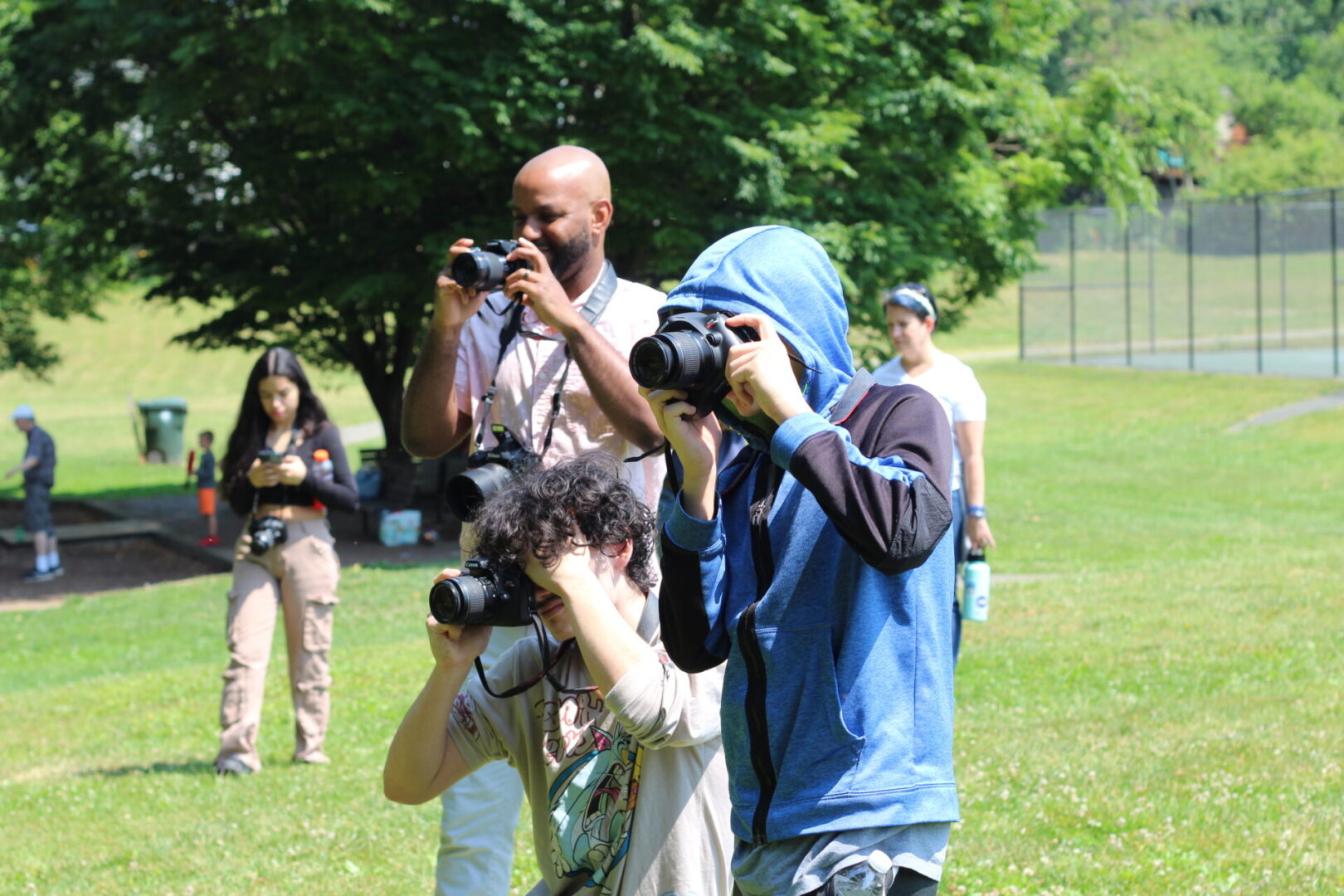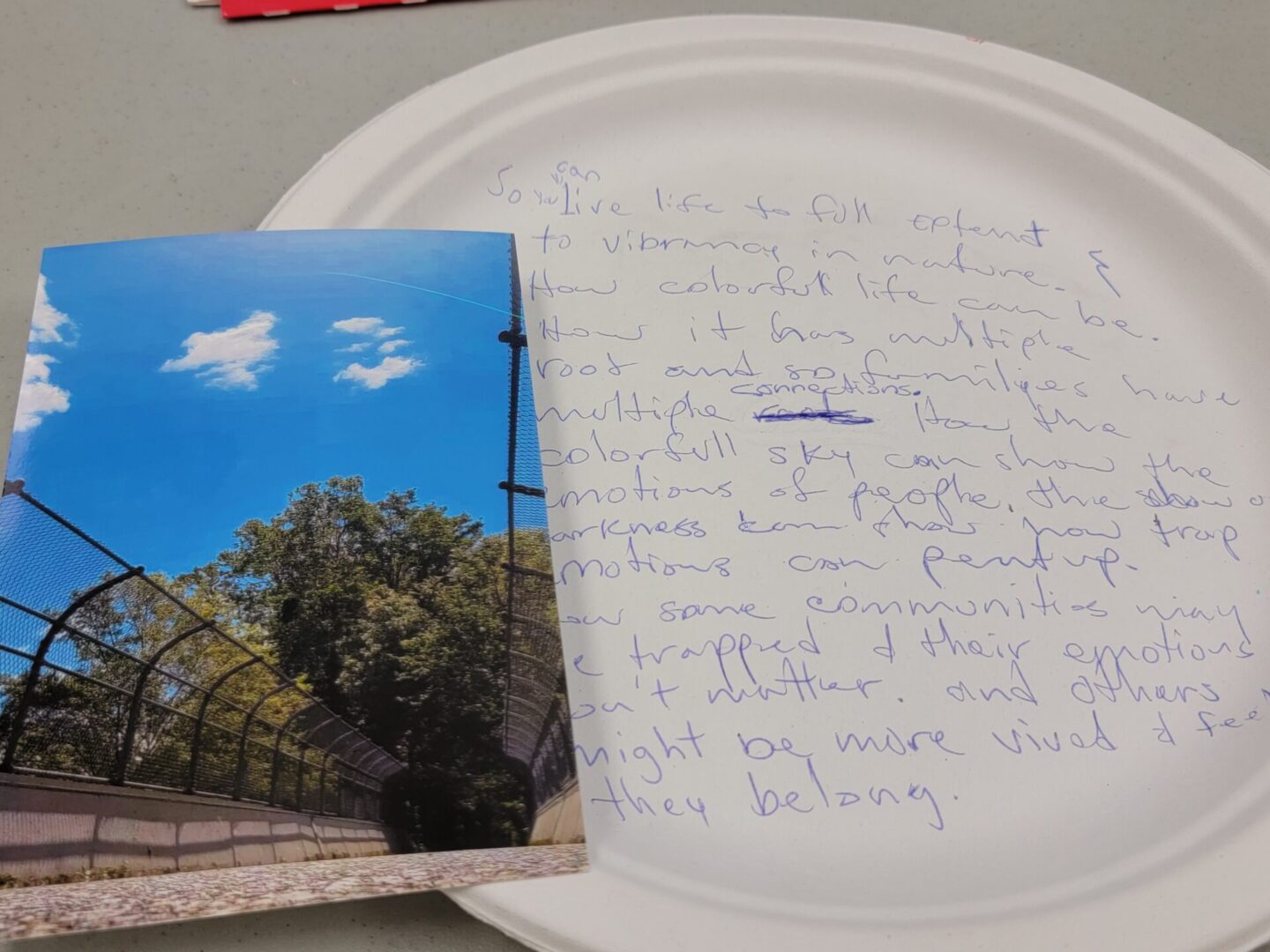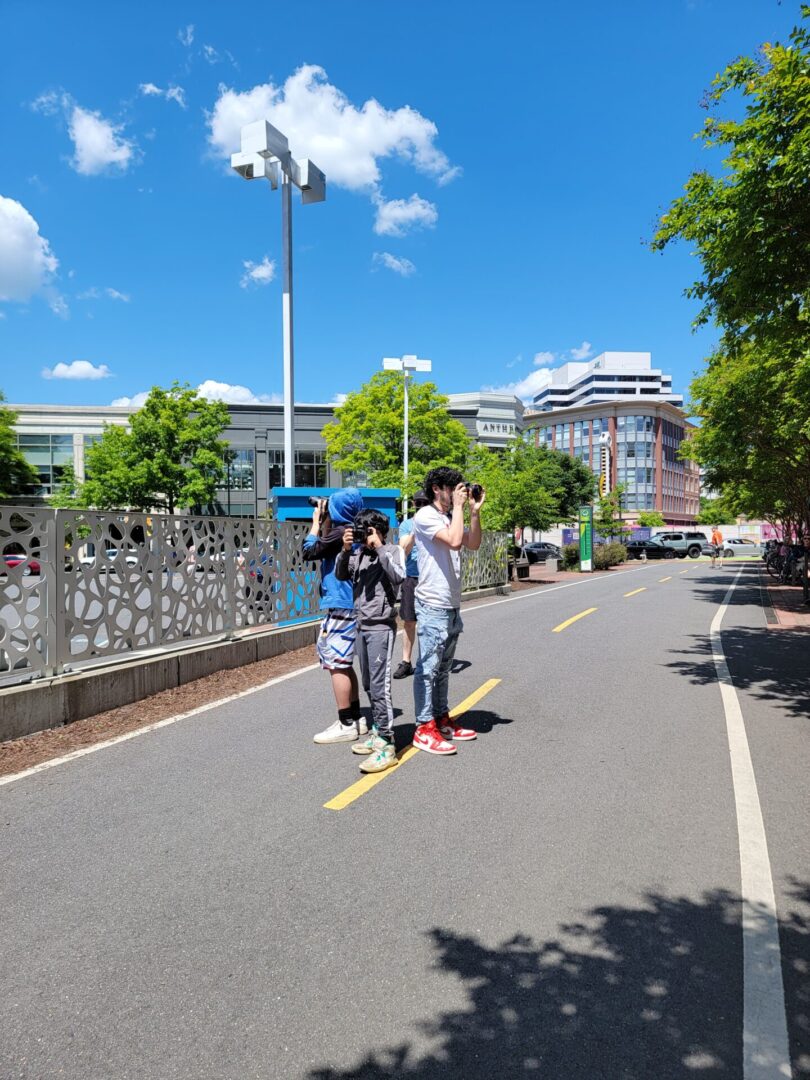
Amplifying Voices through the Lens of a Camera
One of the ways Story Tapestries amplifies the voices of youth who have historically been underserved is through our artist-in-residencies. Our programs share skills for using art to explore important issues. This is especially powerful when youth connect with a medium that they find stimulating and interesting. Collabortations with adults holds space for youth for self-reflection, as well as reflection with others on their work product. Teaching Artist, Jessica Wallach, worked with YMCA Metro Washington on a project combining all of these elements. The youth explored a multitude of perspectives. They learned to be open and find value in another person’s perspective. This is a fundamental element of shifting the narrative and creating equitable spaces.
Jessica shares her experience of exploring important issues through the lens:
YMCA Metro Washington wanted to do a photo project where the young people to explore important issues. This project was different than most. Each young person came with a mentor. This set up some interesting dynamic. Each photographer had a buddy thinking with them. The mentors had a long standing deep, rich relationship. This allowed the pairs to talk about about what issues they wanted to explore. .
The question was where to provide the youth with compelling spaces to exploring important issues through the lens. After meeting with the young people, the answer became…everywhere! Our plan was to photograph at different places around Montgomery County and have them take photos related to key issues of safety, community engagement, accessibility and sustainability. The first class we met at the Silver Spring Civic Center on Saturday late morning. This meant there was a Farmers’ Market going on. At this first meeting, it was clear the youth were very interested in photographing nature, so the second two classes we planned to go for nature walks.
Introduction to DSLR Cameras

In that first class, we introduced working with DSLR cameras, which most of them had not used before. Participants learned how these big cameras were similar, and different, from their cell phone cameras they were used to working with. They also needed to learn how to work a camera, what makes cameras unique. Youth learned about how you can stop or capture motion by controlling the shutter speed and you can create depth by your distance from the subject/its distance from the background, zooming in and out, and changing the aperture. Throughout our time together, they played with these two concepts. On the first nature walk that started in the heart of downtown Bethesda, participants stopped the motion of bikers and walkers, took photos of each other jumping, and played with depth both on a small scale like with a leaf or a much grander scale of a pathway. As they explored their surroundings, my photographers loved capturing light as it dappled through the trees. They could not stop taking photos. In fact, they photographed all the way back to our meeting spot!
Capturing Movement and Shifting Perspectives
The third day we went for another nature walk, but first we stopped at a basketball court and some of the youth played and some photographed. I pointed out a slanting wall – it’s what I do when I teach, point out the things that catch my eye. On the walk, one of the youth continued on her quest to photograph paths and depth. The other three were brothers and they could not get enough of photographing each other.
That day we came back to the classroom and started working on exploring important issues they found through lens. They each picked one or two photos and reflected on how the photo related to themselves, their family, their community or the world. Three of the youth were brothers and all three connected their photos for their family. Another youth compared two photos and reflected about how she had many new paths and choices ahead of her and how she has a gate to limit who enters her personal space.
The mentors modeled curiosity and enthusiasm about the world as we went on our nature walks. They photographed alongside the youth and pointed out what they found interesting and what they thought the youth might find interesting. Mentors continued to leverage their relationship with each young person during the reflections on the photos. Each youth was paired with a mentor or YMCA staff member and listened and/or took notes on paper plates, filling their plates with reflections.
It is clear from these reflections that using the camera helped the youth notice small details that connect deeply to their lives.
- Highlights of participants’ photography and reflections
- Check out our 2022 Annual Report to learn more about program impact
- Join us as we Elevate Voices and Celebrate Community on October 22, 2023

